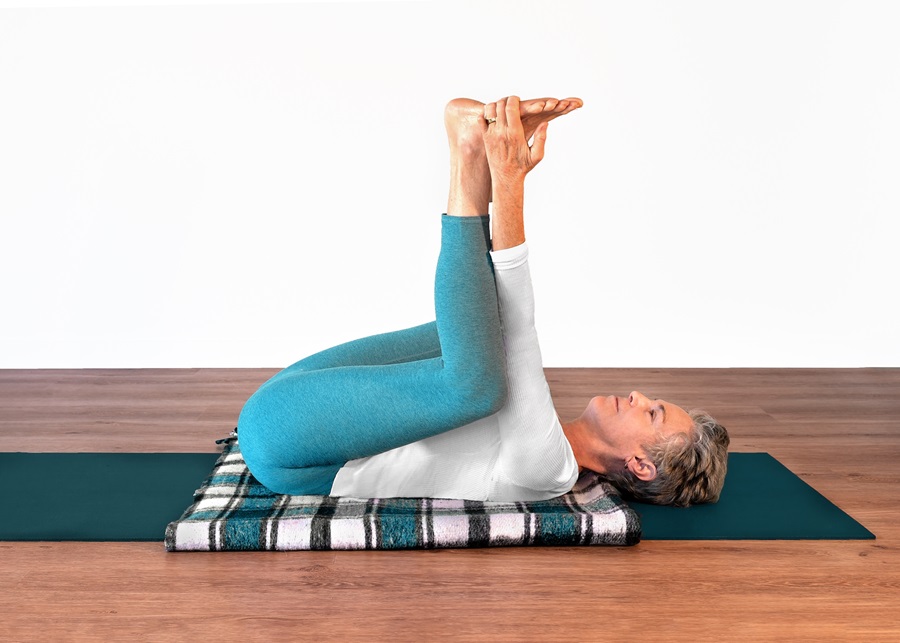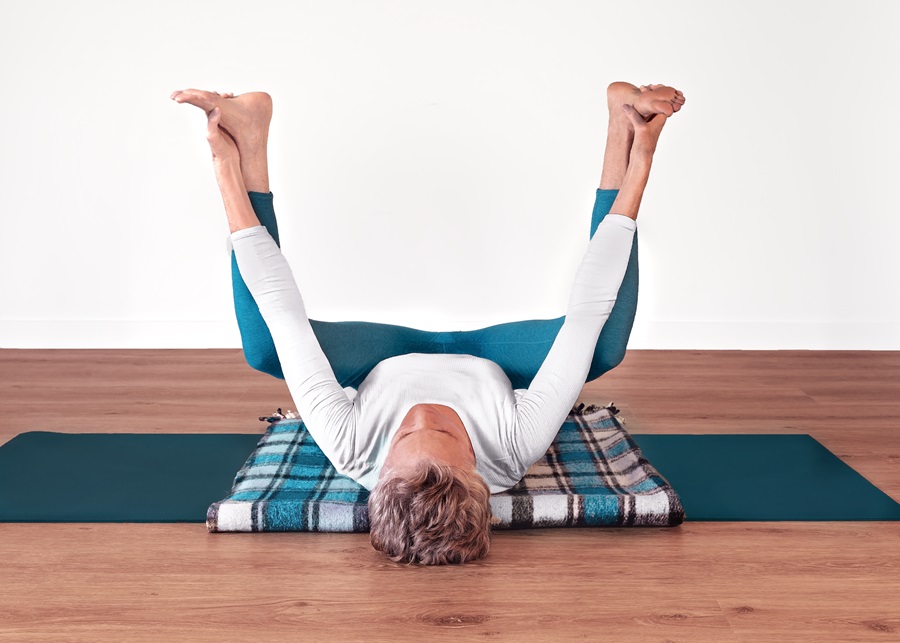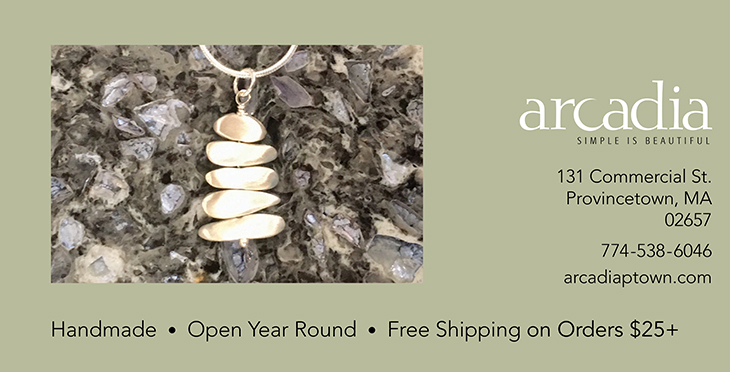Spring brings renewal: it’s a time to embrace the vibrancy of a new season. But as those of us on the Outer Cape know, the transition comes only gradually. As if following nature’s lead, many of us find our bodies are slow to shake off the sluggishness of winter: a stiffness has set in over months of inactivity.
One effective way to ease this is through the practice of yin yoga, based on the Chinese philosophy of complementary principles where yin is the hidden, still aspect of things while yang is all that is revealing and in motion. Yin yoga emphasizes slow poses held for longer times. Happy Baby pose is one in this style; known for its deep stretch and relaxing effects, it helps release tension and improve flexibility.
Before moving into the pose, prepare your space and your body for a relaxing and restorative practice. Place a yoga mat and, if desired, a blanket on the floor. Lie down on your back and draw your knees into your chest, gently rolling from side to side to start loosening up the spine and hips. Think of this gentle movement as the first step in awakening your body from its winter slumber.
Release your feet to the floor with knees bent. Place your hands on either side of your rib cage and breathe deeply into your lungs, feeling your hands move apart as the ribs expand sideways.

Take a few breaths in and out through your nose. Then, try to breathe into your lungs while saving some breath to breathe down into the sit bones, creating a sense of length in your body. Do several rounds of this breathing exercise, then relax your breath and let it return to a normal rhythm.
Now you are ready to do the pose. Take a breath in, and on your exhale bring your knees into your belly and lift the feet up, with the soles of your feet parallel to the ceiling. Take hold of the outside edge of each foot, drawing the knees down to either side of the body, as if pulling them toward your armpits.
There are some ways to lighten this stretch. If you can’t reach your feet, try wrapping a belt around each foot and pulling the straps down. Or wrap your forearms or hands around your thighs and pull down while keeping your feet up. From here, push your tailbone down and away from you to avoid tucking in your pelvis too much. If this feels too intense, try doing one leg at a time. Or do the pose lying on your back, knees bent and feet on the wall. You may feel this in several different areas depending on where your tightness is. It’s targeting stiffness in the back, hips, groin, and thighs.
Once you are in the pose and feel comfortable enough to breathe normally, stay there, holding it for three to five minutes, or perhaps a little less if you are a beginner. Relax as much as you can while maintaining the shape of the pose. Listen to your body. If the pose starts to feel painful or you get numbness, these are signs that you have passed your edge and the pose is no longer beneficial. It should be easy to breathe normally. Come out of the pose and take a few breaths. If it feels right, try it again.

The benefits of holding a pose like this are described both in traditional Chinese medicine theory and in recent research on the role of the fascia in the body.
The traditional Chinese medicine system proposes invisible channels that run though the body — the meridians. When qi — the body’s vital energy — flows freely through them, the body is healthy and balanced. Yin yoga aims to enhance the flow of qi by applying pressure to the connective tissues where the meridians reside. It is by holding the pose, gently tugging the deeper tissues of the body for longer periods, that you are exciting the qi flow in them and nourishing them.
Western scientific research also highlights the importance of fascia, a three-dimensional matrix of connective tissue that envelops muscles, bones, organs, and nerves. “Until recently, this network of tissue throughout the body received very little attention, despite its major role in every move you make,” says the entry on it at Johns Hopkins Medicine. Fascia, once thought to be inert packing material, is now recognized for its relationship to movement, anatomy, and overall health. It is primarily liquid but can become sticky or dry with repetitive motion, inactivity, aging, or illness. Yin yoga’s prolonged poses help restore the fascia’s natural fluidity, reducing pain, stiffness, and physical limitations.
I like to think of blending ancient meridian theory with a modern understanding of fascia as I practice yin yoga poses like this one. It suggests a holistic approach to wellness, one that promotes physical flexibility and mental calm, and to me that makes sense as we slowly reconnect to the energy of spring. It is also useful for anyone seeking deeper relaxation and the feeling of letting rejuvenation arrive slowly.



